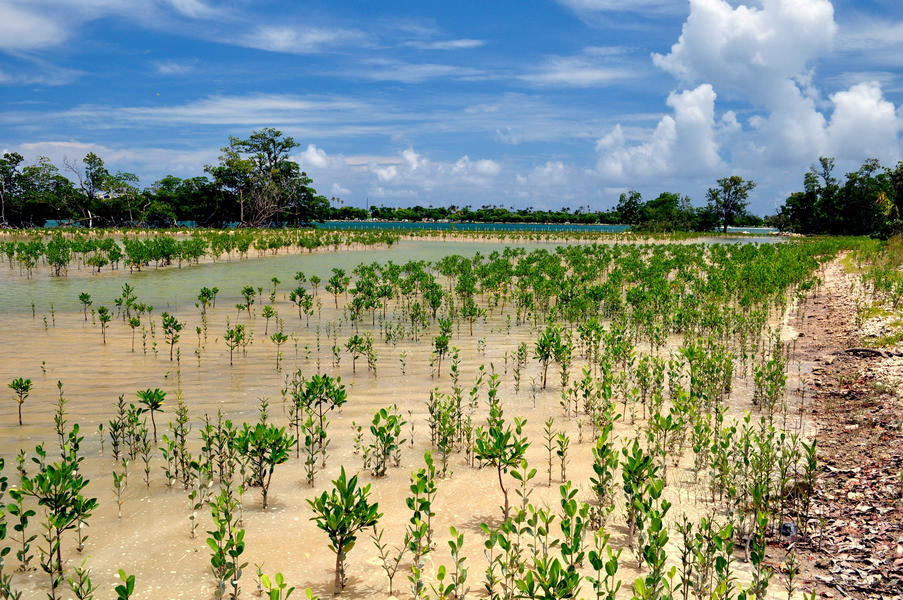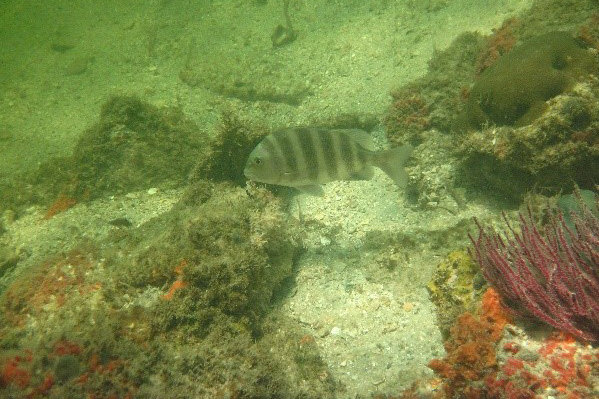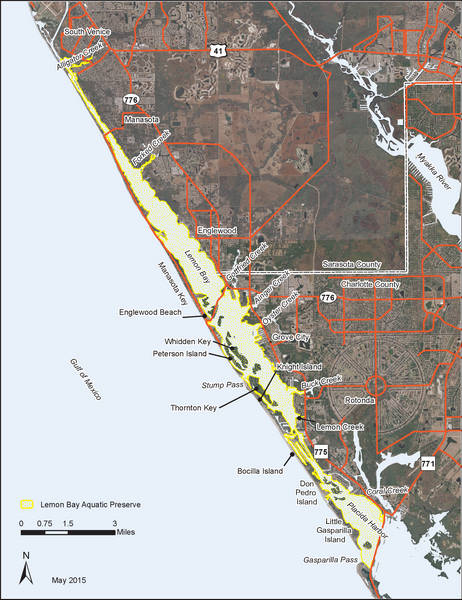

Lemon Bay Aquatic Preserve
- Home
- Divisions
- Office of Resilience and Coastal Protection
- Aquatic Preserve Program
- Lemon Bay Aquatic Preserve
Aquatic-Preserve Quick links
- Alligator Harbor Aquatic Preserve
- Apalachicola Bay Aquatic Preserve
- Banana River Aquatic Preserve
- Big Bend Seagrasses Aquatic Preserve
- Biscayne Bay Aquatic Preserves
- Boca Ciega Bay Aquatic Preserve
- Cape Haze Aquatic Preserve
- Cape Romano-Ten Thousand Islands Aquatic Preserve
- Cockroach Bay Aquatic Preserve
- Coupon Bight Aquatic Preserve
- Estero Bay Aquatic Preserve
- Fort Pickens Aquatic Preserve
- Gasparilla Sound-Charlotte Harbor Aquatic Preserve
- Guana River Marsh Aquatic Preserve
- Indian River-Malabar to Vero Beach Aquatic Preserve
- Indian River-Vero Beach to Fort Pierce Aquatic Preserve
- Jensen Beach to Jupiter Inlet Aquatic Preserve
- Kristin Jacobs Coral Aquatic Preserve
- Lake Jackson Aquatic Preserve
- Lemon Bay Aquatic Preserve
- Lignumvitae Key Aquatic Preserve
- Loxahatchee River-Lake Worth Creek Aquatic Preserve
- Matlacha Pass Aquatic Preserve
- Mosquito Lagoon Aquatic Preserve
- Nassau River-St. Johns River Marshes and Fort Clinch Aquatic Preserves
- Nature Coast Aquatic Preserve
- North Fork, St. Lucie Aquatic Preserve
- Oklawaha River Aquatic Preserve
- Pellicer Creek Aquatic Preserve
- Pine Island Sound Aquatic Preserve
- Pinellas County Aquatic Preserves
- Rainbow Springs Aquatic Preserve
- Rocky Bayou Aquatic Preserve
- Rookery Bay Aquatic Preserve
- St. Andrews Aquatic Preserve
- St. Joseph Bay Aquatic Preserve
- St. Martins Marsh Aquatic Preserve
- Terra Ceia Aquatic Preserve
- Tomoka Marsh Aquatic Preserve
- Wekiva River Aquatic Preserve
- Yellow River Marsh Aquatic Preserve
- All Aquatic-Preserve content
"Imagine Florida without its tourism-driven economy: without fishing, boating, wading and beachcombing. Thankfully, you won't have to because the state's 41 aquatic preserves (AP), including Lemon Bay AP, will help safeguard Florida's environment and quality of life for generations to come." - U.S. Senator Bill Nelson

Lemon Bay Aquatic Preserve is a unique, submerged ecosystem of mangrove, seagrass and oyster communities. The bay is a long, narrow estuarine system, running from just south of Placida, north, almost to Venice. It is about 13 miles long and averages three-quarters-of-a-mile wide. Lemon Bay is separated from the Gulf of America by two barrier islands - Little Gasparilla Island and Manasota Key. Manasota Key stretches along the northern two-thirds of the bay's length. Lemon Bay is the smallest of the five Charlotte Harbor Aquatic Preserves (CHAP).
The Charlotte Harbor Estuaries Volunteer Water Quality Monitoring Network (CHEVWQMN) is a network of volunteers throughout the estuaries in the Charlotte Harbor area who collect monthly water quality data on a consistent, technically sound basis. Established initially in the Lemon Bay area in 1996, the program now samples 46 sites throughout the Charlotte Harbor estuaries in Sarasota, Charlotte and Lee counties.

Resource Management and Monitoring: Aquatic preserves staff and volunteers routinely monitor water quality and natural resources in the bay, such as seagrasses and nesting birds. Ongoing programs include:
- Charlotte Harbor Estuaries Volunteer Water Quality Monitoring Network.
- Seagrass Monitoring.
- Wading and Diving Bird Colony Monitoring.
Education and Outreach: Aquatic preserves staff provide educational materials, scientific data and outreach presentations upon request. Learn more about the aquatic preserves by visiting the Friends of Charlotte Harbor website.
12301 Burnt Store Road
Punta Gorda, FL 33955
United States
Residents and visitors enjoy fishing, kayaking, birding, wading and beachcombing. Ski Alley, the Intracoastal Waterway and several anchorages are popular with recreational boaters.
A multi-agency agreement for a general permit has been approved that identifies locations and dredge depths for boat navigation channels and seagrass protection throughout Charlotte County. These channel designs provide public access while protecting priority seagrass areas and identifying a "No Internal Combustion Motor Zone," or pole and troll area, for the public interest requirement.
Florida’s coastal areas, especially uplands adjacent to water, often have a rich history of human settlement. Human activity within CHAP and Charlotte Harbor Preserve State Park dates back to the Archaic period, 10,500 – 3,000 B.P. There are hundreds of historic or archaeological sites recorded in the Florida Master Site File within or immediately adjacent (i.e., within 50 meters or 164 feet) to CHAP. Most are within CHAP boundaries. However, much of the area has not been surveyed, and it is expected there are still unrecorded sites located along the coastline of the uplands, on islands and in inundated areas. These historic sites include Native American and European encampments, villages and shipwrecks, along with prehistoric shell kitchen middens.
While there are many recorded sites, the prehistoric cultural sequence for the coastal areas around CHAP still is incompletely understood, particularly the earlier pre-ceramic occupations. Part of the problem centers on the fact that there has been an overall 30- to 50-meter rise in sea level in the past 10,000 to 12,000 years. Thus, the majority of the coastal sites from these earliest periods lie on the bottom of the Gulf of America and the extensive bay system of the aquatic preserves.
Mollusk reefs, perhaps the most impacted natural habitat type in CHAP, are expansive concentrations of sessile mollusks (usually the Eastern oyster in Florida) occurring in intertidal and subtidal zones to a depth of 40 feet, and are typically referred to as oyster reefs or oyster beds. Oyster reef habitat provides numerous ecosystem services: They are essential fish habitat, bio-assimilate nutrients, filter water, reduce turbidity and stabilize shorelines, among numerous other functions.
Tolley, Volety and Savarese (2005) studied the resident communities of oyster reefs in the Caloosahatchee Estuary and identified 10 species of decapods and 16 species of fish living on the oyster reef. At least 90% of oyster reef habitat in the Charlotte Harbor region is estimated to have been lost as a result of dredging, mining for road beds, hydrologic changes, and harvest (Boswell, Ott, Birch, & Cobb, 2012). Natural predators impacting mollusk reefs within CHAP include stone crabs, blue crabs, oyster drills (Stramonita haemastoma), sheepshead (Archosargus probatocephalus), black drum (Pogonias cromis) and other fishes and invertebrates. The relative abundance (0.1%) of oyster reef is low throughout CHAP. Lemon Bay and Cape Haze aquatic preserves have a slightly higher percentage (0.2%) of oyster reefs than the other aquatic preserves.
Salt marshes occur in the portion of the coastal zone affected by tides and seawater but are protected from large waves either by the broad, gently sloping topography of the shore, by a barrier island or by location along a bay or estuary. The width of the intertidal zone depends on the slope of the shore and the tidal range. Salt marshes may have distinct zones of vegetation, each dominated by a single species of grass or rush. Flooding frequency and soil salinity are the two major environmental factors that influence salt marsh vegetation; saltgrass (Distichlis spicata), needle rush (Juncus spp.) and saltmarsh cordgrass (Spartina alterniflora) all tolerate a wide range of salinities.
Cordgrass is found where the marsh is flooded almost daily, whereas needle rush and saltgrass are found where the marsh is flooded less frequently. In Charlotte Harbor, as in all of South Florida, salt marshes generally serve as a transitional zone between mangroves and freshwater marshes. Salt marshes are present in CHAP but are found only in Lemon Bay, Gasparilla Sound-Charlotte Harbor and Pine Island Sound aquatic preserves. Mangroves typically outcompete salt marsh vegetation in the estuaries of southwest Florida.
Mangrove swamps are dense, low forests occurring along relatively flat, intertidal and supratidal shorelines of low wave energy along southern Florida. Four species of trees are naturally found in mangrove swamps: red mangrove, white mangrove (Laguncularia racemosa), black mangrove (Avicennia germinans) and buttonwood (Conocarpus erectus). Birds utilize mangrove swamps as nesting habitat and fish use their roots as nursery grounds and as protection from predators. Mangroves also stabilize substrates and shorelines. More than 5% of CHAP is composed of mangrove swamp, including most of the CHAP shoreline.
Threats to mangrove habitat include wide-spread trimming and removal, conversion to hardened shorelines, exotic vegetation and sea level rise. Coastal development including sea walls contributes to the loss of the mangrove shoreline and is most apparent in Lemon Bay Aquatic Preserve.
Natural events such as hurricanes can also affect mangrove swamps, including Hurricane Charley, which caused degradation of mangroves throughout CHAP in 2004. Although some mangrove islands were totally lost, most areas have recovered. Brazilian pepper (Schinus terebinthifolius), carrotwood (Cupaniopsis anacardioides) and seaside mahoe (Thespesia populnea) are three invasive non-native species that can be found within mangrove swamps. Red mangroves have been designated as an essential feature of sawfish critical habitat.
Seagrass beds are the most abundant vegetated habitat type in CHAP. Seagrasses are not true grasses but are flowering plants (angiosperms) that live underwater. Like land plants, seagrasses produce oxygen and store carbon, which are two important functions. The depth at which seagrasses are found is limited by water clarity because they require sunlight; each species has specific light requirements allowing some to grow deeper than others. Seagrasses are a sensitive indicator of water quality and pollution in shallow coastal areas as they are vulnerable to various forms of anthropogenic stress. Seagrasses are also susceptible to scarring from boat propellers, anchors and trawls. While seagrasses will recolonize areas when water quality is good and disturbances are removed, re-vegetation of scarred areas may require many years. Reoccurring disturbances such as prop scarring and dredging can result in permanent seagrass loss.
Seagrass beds make up around 50% of the natural communities in each of the aquatic preserves, except Gasparilla Sound-Charlotte Harbor Aquatic Preserve which is characterized by much deeper water. Eighty percent of the seagrass beds in CHAP are mapped as continuous while the rest are discontinuous or patchy. Continuous seagrass beds are characterized by a uniform signature on aerial photos with only small sandy-bottom patches (less than one-quarter acre) within the bed; discontinuous or patchy seagrass beds are areas with isolated patches of seagrass interspersed with open bottom.
Seagrass communities occur in subtidal (rarely intertidal) zones, in clear, coastal waters where wave energy is moderate. Aquatic preserve personnel monitor six seagrass species within CHAP: turtle grass, manatee grass (Syringodium filiforme), shoal grass, star grass (Halophila engelmannii), paddle grass (Halophila decipiens) and widgeon grass (Ruppia maritima); the salinity tolerance of the species varies and along with light availability dictates where each will be found. Listed species such as the state and federally endangered Florida manatee, Atlantic green turtle (Chelonia mydas), Atlantic hawksbill turtle (Eretmochelys imbricata), and the state and federally listed threatened Atlantic loggerhead turtle (Caretta caretta) all rely on seagrass bed communities. Together, seagrasses and their epiphytes serve as important food sources and nursery areas to a myriad of species. Often, numerous species of epiphytic algae, egg casings and invertebrates attach to the seagrass leaf blades.
Sponge beds are characterized as dense populations of sponges. Although concentrations of living sponges can occur in marine and estuarine intertidal zones, sponge beds are confined primarily to subtidal zones. There are no currently mapped sponge beds in CHAP. Individual sponges occur sporadically throughout CHAP and sponge beds may be present.
Unconsolidated substrates are expansive, relatively open areas of subtidal, intertidal and supratidal unsolidified materials that lack dense populations of sessile plant and animal species. This community may support a large population of infaunal organisms as well as a variety of transient planktonic and pelagic organisms. Furthermore, according to Schmid, unvegetated bottom with colonies of sessile invertebrates such as tube worms, tunicates, bryozoans and sponges (i.e., live bottom) has been identified as essential foraging habitat for the endangered Kemp’s ridley turtle (Lepidochelys kempii) in the coastal waters of west Florida. This community is known to make up most of the unclassified submerged bottom areas within CHAP. It is found not only in deeper waters such as channels but also in some of the shallowest and intertidal portions of the bay where seagrasses are not found. The only mapped areas of unconsolidated substrate are tidal flats - areas of sand or mud that are unvegetated and cycle between being submerged and exposed with the change in tides.
Tidal flats make up less than 5% of CHAP. During daylight hours, tidal flats serve as a primary feeding ground for numerous species of shorebirds and wading birds. During the night, fish, crabs and shrimp become the major consumers. Primary producers of mudflats include diatoms, dinoflagellates, filamentous green algae and blue-green algae. While these areas can appear relatively barren, the densities of infaunal organisms in subtidal zones can reach the tens of thousands per square meter, making these areas important feeding grounds for many bottom-feeding fish.
Consolidated substrates are mineral-based natural communities generally characterized as expansive, relatively open areas of subtidal, intertidal and supratidal zones that lack dense populations of sessile plant and animal species. Consolidated substrates are solidified rock or shell conglomerates and include coquina, limerock or relic mollusk reef materials. These communities may be sparsely inhabited by sessile, planktonic, epifaunal and pelagic plants and animals but house few infaunal organisms (i.e., animals living within the substrate).
Consolidated substrates are important in that they form the foundation for the development of other marine and estuarine natural communities when environmental conditions become appropriate. Consolidated substrates are not mapped in CHAP, but small localized areas are known and include areas along the eastern shoreline of Charlotte Harbor including Alligator Creek and Pirate Harbor.
| FNAI Natural Community Type | Acreage |
|---|---|
| Mollusk Reef | 17 |
| Salt Marsh | 4 |
| Mangrove Swamp | 378 |
| Seagrass Beds | 3,744 |
| Sponge Beds | Unknown |
| Unconsolidated Substrate | 123 |
| Consolidated Substrate | Unknown |
| Unclassified | 2,961 |
Interested in subscribing to DEP newsletters or receiving DEP updates through email?
Sign UpAbout DEP
The Florida Department of Environmental Protection is the state’s lead agency for environmental management and stewardship – protecting our air, water and land. The vision of the Florida Department of Environmental Protection is to create strong community partnerships, safeguard Florida’s natural resources and enhance its ecosystems.
Learn MoreContact
3900 Commonwealth BoulevardTallahassee, Florida 32399-3000 Public.Services@FloridaDEP.gov 850-245-2118
